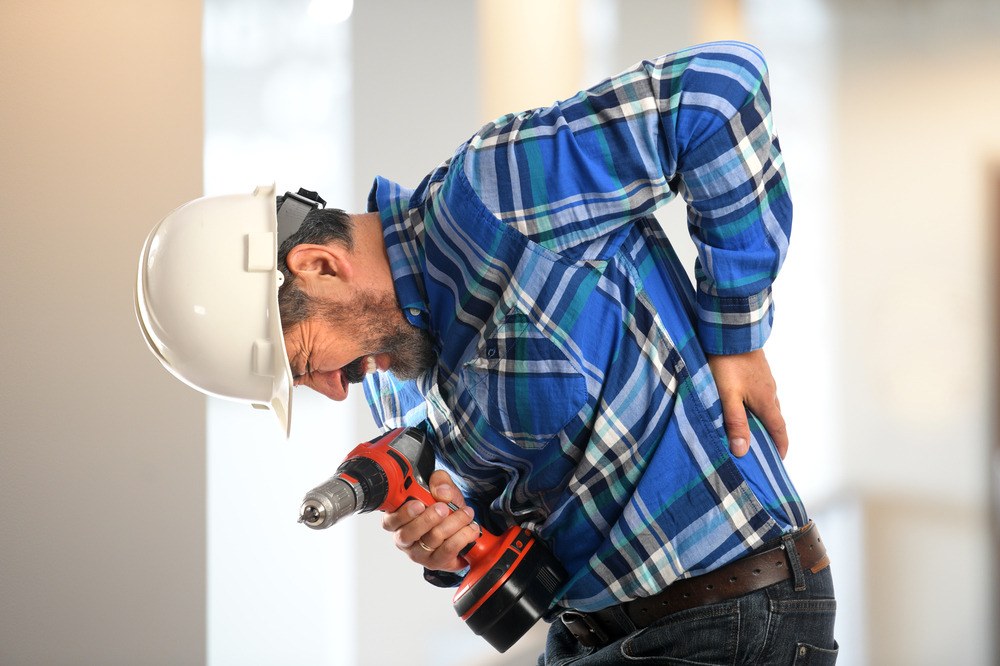Photo by Jimmy Nilsson Masth on Unsplash .
Keep your tools sharp and your body sharper—embrace exercise rehabilitation for a healthier, more resilient trade career
Trade workers, or “tradies,” are the backbone of industries like construction, carpentry, and HVAC (Heating, Ventilation, and Air Conditioning). Their jobs require physical strength, agility, and endurance, making them susceptible to a range of injuries. From lifting heavy materials to working in awkward positions, the demands of these roles can take a toll on the body.
Exercise rehabilitation is crucial in managing these injuries, aiding recovery, and preventing future issues. Our Exercise Physiologists in Shailer Park are experienced in prescribing exercises that benefits Tradies Health. In this blog, we will explore common injuries faced by trade workers and how exercise rehabilitation can play a pivotal role in their recovery and prevention.
Common Trade Worker Injuries

1. Back Injuries
Back injuries are among the most prevalent issues for trade workers. Activities such as lifting heavy objects, bending, and twisting can strain the back muscles and spine, leading to:
- Muscle Strains: Overuse or improper lifting techniques can strain back muscles, leading to acute or chronic pain.
- Herniated Discs: When the soft material inside a spinal disc pushes out, it can cause significant pain and discomfort.
2. Shoulder Injuries
Shoulder injuries are common due to the complex nature of the joint, compounded by repetitive overhead work, lifting, and maneuvering heavy items. Common shoulder injuries include:
- Rotator Cuff Tears: The rotator cuff, a group of muscles and tendons stabilizing the shoulder, can be torn through repetitive strain or acute injury. (An In-depth blog is coming soon)
- Shoulder Impingement Syndrome: This occurs when tendons of the rotator cuff become irritated and inflamed as they pass through the shoulder joint.
- Bursitis: Inflammation of the bursae (fluid-filled sacs that cushion the shoulder joint) can cause pain and limited movement.

3. Knee Injuries
Knee injuries are frequent in trade workers who perform activities involving kneeling, squatting, and lifting. These include:
- Patellar Tendinitis: Inflammation of the tendon connecting the kneecap to the shinbone can result from repetitive stress.
- Ligament Injuries: Injuries to the ACL (anterior cruciate ligament) or MCL (medial collateral ligament) can occur from sudden movements or trauma.
The Role of Exercise
Exercise rehabilitation is a vital approach to managing and recovering from these common injuries. Here is how it contributes to the healing process and helps prevent future injuries:
1. Pain Relief and Recovery
Exercise rehabilitation helps manage pain and supports recovery through:
- Strengthening: Targeted strength training helps rebuild muscles around injured areas, reducing strain and promoting healing. For example, strengthening the core can alleviate pressure on the back, while shoulder exercises can support rotator cuff recovery.
- Range of Motion: These exercises improve flexibility and restore the full range of motion in affected joints, which is crucial for recovery and functionality.
- Aerobic: Activities like swimming or cycling can improve cardiovascular health and maintain fitness without putting additional stress on injured areas.
2. Preventing Future Injuries
Rehabilitation programs are not just about recovery, prevention is the best medicine after all:
- Functional Training: Exercises that simulate job tasks help workers practice safe movement patterns and avoid improper techniques that could lead to injuries.
- Ergonomic Education: Educating workers on proper body mechanics, such as correct lifting techniques and workstation adjustments, can greatly prevent workplace injuries.
3. Improving Overall Health
A well-rounded rehabilitation program contributes to overall health, which is essential for everyone. Exercise can also improve mood and reduce stress, which is important for coping with the challenges of physically demanding work.

Exercise Rehabilitation for Tradies
Integrating exercise rehabilitation into a busy trade worker’s routine can be challenging but manageable with the right approach:
- Seek Professional Guidance: Working with a physiotherapist or exercise physiologist ensures that exercises are performed correctly and effectively.
- Set Realistic Goals: Establish clear, achievable goals for rehabilitation and track progress regularly.
- Incorporate Short Sessions: Even short, focused exercise sessions can be effective. Consider integrating quick stretches or strength exercises during breaks.
Conclusion
Trade workers face significant physical challenges that make them prone to various injuries. Exercise rehabilitation has a huge impact on managing these injuries, supporting recovery, and preventing future issues. By incorporating targeted exercises, pain management techniques, and preventive measures, trade workers can improve their physical health, enhance job performance, and maintain a long and productive career.
Essential Health Physiotherapy Shailer Park’s physiotherapists or exercise physiologists can help with all the steps of the recovery journey, and guide you along the right path. Not sure where to start, call our friendly receptionists on 07 3132 0898!
Book now for your journey to recovery with Essential Health Physiotherapy Shailer Park.
Check our Previous Blogs



